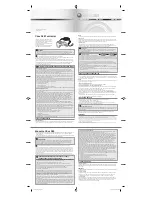
4MELFA-BASIC IV
Detailed explanation of command words
4-156
[Explanation]
(1) When the program starts, the status of <Priority No.> 0 is "enabled." When <Priority No.> 0 is "disabled,"
even if <Priority No.> 1 to 8 are set to "enabled," no interrupt will be enabled.
(2) The statuses of <Priority No.> 1 to 8 are all "disabled" when the program starts.
(3) An interrupt will occur only when all of the following conditions have been satisfied:
*<Priority No.> 0 is set to "enabled."
*The status of the Def Act statement has been defined.
*When the <Priority No.> designated by Def Act is made valid by an Act statement.
(4) The return from an interrupt process should be done by describing either RETURN 0 or RETURN 1. How-
ever when returning from interruption processing to the next step by RETURN1, execute the statement to
disable the interrupt. When that is not so, if interruption conditions have been satisfied, because interrup-
tion processing will be executed again and it will return to the next step, the step may be skipped.
(5) Even if the robot is in the middle of interpolation, an interrupt defined by a Def Act statement will be exe-
cuted.
(6) During an interrupt process, that <Priority No.> will be executed with the status as "disable."
(7) A communications interrupt (COM) has a higher priority than an interrupt defined by a Def Act statement.
(8) The relationship of priority rankings is as shown below:
COM>Act>WthIf(Wth)>Pulse substitution
[Related instructions]
















































